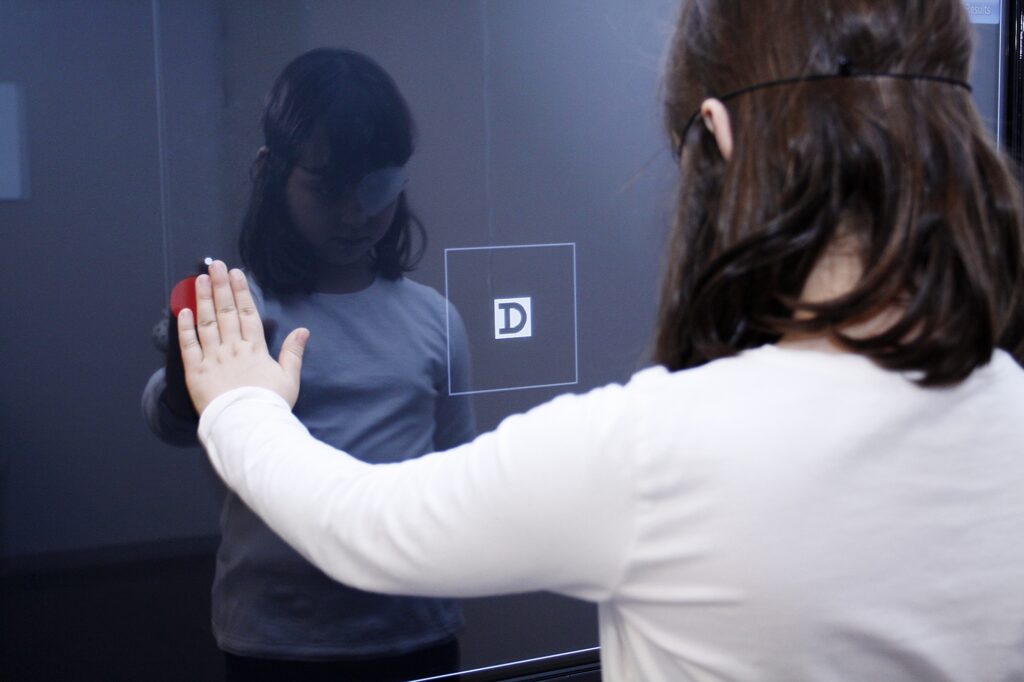Accompaniment
Vision Therapy Area

What is vision therapy?
Vision therapy is a set of techniques and exercises that allow you to train and optimise different vision skills, both in children and adults.
More than 70% of the information our brain receives from the outside reaches us through our eyes. The aim of the therapy is for each patient to make the most of their visual system, working on those dysfunctions or alterations that interrupt its proper development, in order to perceive, process and understand visual information more effectively.
Patients for whom vision therapy is indicated
Vision therapy may be a useful tool for cases such as Amblyopia or lazy eye or Strabismus. Furthermore, it is also indicated for accommodative (focusing difficulties), binocular (eye coordination when combining images from both eyes), oculomotor (eye movements) or visual perception (interpretation of visual stimuli) problems.
Some areas where vision therapy is particularly beneficial are improving sports and school performance.
In the case of learning difficulties, it is estimated that one third of children who fail at school have visual problems, which can lead to poor concentration, refusal to read, headaches, double vision and dizziness, eye discomfort, etc. Sometimes, these problems do not correspond to any eye disease or low visual acuity (refractive errors), but hide a poor development of visual skills that can be trained. For example, when reading we use very short and accurate eye movements called saccades, whose poor control causes slow and ineffective reading.
In the Vision Therapy Areas at the Miranza centres, we have a multidisciplinary team made up of specialist optometrists and ophthalmologists who analyse your needs and design a customised treatment.
In the case of children, routine eye check-ups are essential, since the visual system is being formed during childhood; thus, it is advisable to detect and correct early on any changes that interfere with this process. Once any organic or pathological problem in the eyes has been ruled out, we can start working with vision therapy.
Similarly, based on a proper diagnostic assessment, we can correct alterations affecting visual performance in adults, noticed or triggered by poor visual habits, such as excessive use of screens or prolonged near-vision work.
Through customised training, whose difficulty varies according to the patient’s goals and as the sessions evolve, we could say that the eyes “learn to work together.” At the end of the therapy, we ensure that the new visual skills acquired are integrated into your or your child’s daily life tasks (reading, sports, computer …).
The duration of the treatment will depend on the type of skills to be developed and the pace required for each person, although it usually takes a minimum of 3 to 6 months of support. During this time, we combine consultation sessions (usually weekly) with daily exercises at home, guided by our experts in vision therapy.